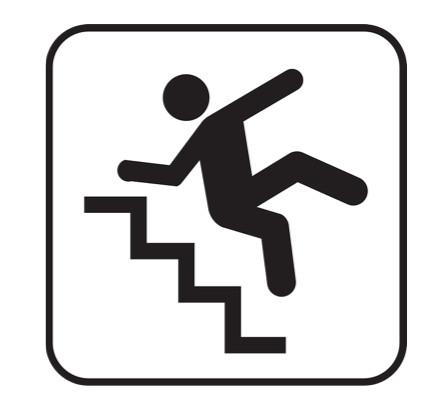It might seem that just using plain old common sense would help to prevent accidents at work. It is when a person becomes lackadaisical that injuries happen. All it takes is a momentary lapse in concentration to result in a serious and possibly fatal injury. Having procedures in place that are followed step by step is the best way to prevent accidents from happening. It is easy for people to get in a rush when performing tasks.
There are some things however that shouldn’t be overlooked and rushed when it comes to the safety of your workers. Many practices have been instilled in the workplace by OSHA and other governmental bodies to ensure the safety and well-being of employees.
Cleaning Practices
When it comes to people falling down in the workplace, it is usually due to negligence on somebody’s behalf, and a mess that was left behind. The best way to avoid a fall from either an open drawer, an obstruction like trash or wires, is to have a set cleaning schedule with assigned duties to those currently working.
If there is instruction for an employee to sweep the floor once an hour you are far less likely to have someone falling over from slipping or tripping over something. Planning ahead to create a clean environment will ensure a safer and more productive work environment. When everyone is participating in a daily routine it keeps everyone involved and aware of employee safety.
Reduce Wet Surfaces
One of the largest culprits for people being injured on the job is falling due to wet or slippery surfaces. The best way to avoid this is to regularly wipe down and mop all surfaces in the work area. This is especially true for high traffic areas of a kitchen in a restaurant. Employees are constantly on the move turning tight corners and carrying heavy loads in their arms.
It is very important to keep these areas dry, safe, and regularly monitored to avoid injury. Many places will use moisture absorbent mats or high traction surfaces for added protection. It is a requirement to also have Caution signs for wet surface or wet floor to alert patrons of the hazard.
Avoid Obstructions in Walkways
People will just as easily trip and fall over something as they will slip and fall. Make sure all drawers are tucked in and that any signs or tools are properly placed to the side. Many times someone will turn a corner sharply and not see that there is something in the way. This could be from carrying a server tray or not seeing what is around the corner.
Make it a common practice to have a dedicated place for tools to be placed and for things to be stored to avoid them being put down in the wrong place, especially where others will be moving around and working.
Maintain Proper Lighting
Make sure that there is sufficient lighting inside and outside the building. A well-lit workplace will help deter robbery and allow for employees to feel safe when taking out the trash or cleaning a parking lot. If they can see a spill or puddle they will be less likely to slip and fall. There should be enough lighting to ensure the person can do their job properly.
This can mean the correct number of lights, and also that they provide enough illumination for the area they are covering. Maintain the switches and the bulbs as a regular part of maintenance and safety checkups.
Proper Dress Code
If you know that your personnel will always be working in a wet and slippery environment, than it is up to the employer to require a specific type of dress conducive to that environment.
This can mean wearing shoes with the right amount of tread, pants, or maybe even gloves to avoid a fall. Many times we are using our hands and arms in quick motion and having the right grip with your hands can also ensure that you will keep yourself stable and not use your own body weight to throw you into a fall. Being aware of hazards in the workplace should set up the safety procedures to make sure they are minimized for the workers.
Nick Quinlan is a blogger from Orlando, Florida. He works for eCompliance and believes that every employee has the right to a healthy and safe work environment. To learn more about Nick, visit him on Google+.



